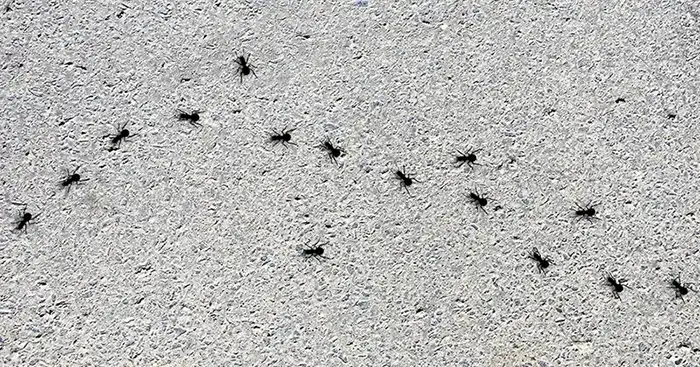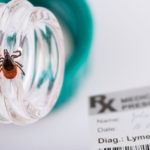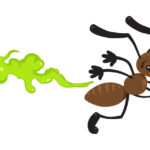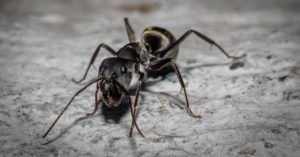
Ants come in many varieties, none of which you want in your home. Pavement ants, also known as Tetramorium caespitum, are a very common form of ants. They take their name from the most common place they’re seen – on sidewalks and pavements.
Pavement ants are very small, about 3 millimeters long. They’re dark brown to black in color with six legs and antennae. You will most commonly notice them outside on pavers, concrete, sidewalks, etc., especially near small mounds of dirt on or near cracks and seams in the concrete.
Where do you find pavement ants?
As their name indicates, pavement ants are primarily outdoor insects. They typically nest beneath gravel, sand, pavement, sidewalks, concrete slabs, etc. While they do come inside to forage for food and, sometimes, to seek a warm spot during winter; the majority of pavement ants stay outside.
Because they don’t nest in, eat or damage wood, pavement ants do not cause structural damage. They do sometimes nest inside over the winter. When they do, you will tend to find these ants near masonry walls on the ground level, in wall or ceiling voids, under floors, in wall insulation or near sources of heat. They will travel along pipes, electrical lines, conduits, along baseboards and near the edges of carpeting.
Pavement ants enter homes and buildings through expansion joints, cracks in the building’s concrete slab, weep holes, gaps, sub-slab heating ducts, around waste pipes, bathroom traps, and other small openings. Pavement ants can also follow trails as far as 30 feet when they’re searching for food.
Still, in general, pavement ants prefer to live outside. Carpenter ants are a much bigger problem indoors.
How can you tell if pavement ants are inside?
While pavement ants generally stay outdoors, here’s how to tell if they came inside:
1) A trail inside, especially in kitchens while they’re hunting for food.
2) Swarming ants
3) Piles of “ant dump,” which is dirt, debris, tiny pieces of concrete or mortar, etc. pushed out while pavement ants nest
A single ant or two can wander in or accidentally be carried inside any time. With regards to point number one above, if you see worker pavement ants consistently over a period of a few weeks, they might be nesting inside your home. Speaking of which…
What do pavement ants eat?
Pavement ants, Tetramorium caespitum, are also commonly called “sugar ants” in the United States, which are not to be confused with Camponotus consobrinus. That’s an Australian ant which is also referred to as “sugar ants.”
Pavement ants are often nicknamed “sugar ants” due to their taste in sweets. Sugar and crumbs from sweet foods attract them as do grains, cereal, and pet food. They can also be attracted by fats, grease and proteins. Outdoors, they are known to eat plant roots, seeds and the honeydew from aphids.
Can pavement ants sting?
Yes, but not usually humans.
Pavement ants do have a stinger but it’s primarily used when fighting with other ants. Even then pavement ants tend to be rather tame in comparison to some other insects, so they mostly fight to defend their territory, and attacking pavement ants tend to only do so when they need to expand into a new area that already has another ant colony.
Stingers in pavement ants are fairly weak. They’re not strong enough to break human skin so they’re more of a nuisance (unlike wasps, hornets, or yellow jackets).
Pavement ants, however, are very territorial and can get into fights on a large scale with other pavement ant colonies, especially in the spring and early summer. When you see large amounts of pavement ants on the sidewalk, this might be what happened.
Arrow Can Handle Your Ants
If you’re not sure what type of ants have gotten into your home, call Arrow Exterminating to identify and eliminate them. Our experts will help identify if you have a problem, what types of ants are involved, and then we’ll explain our plan to stop your infestation. To get started, contact Arrow today.





